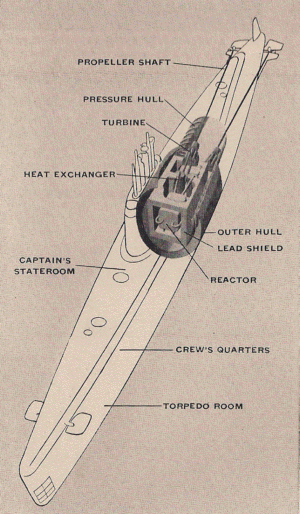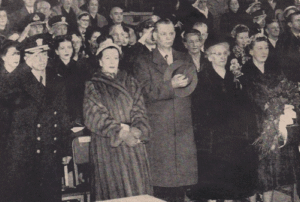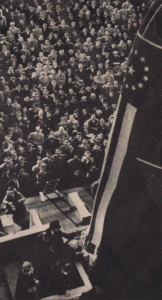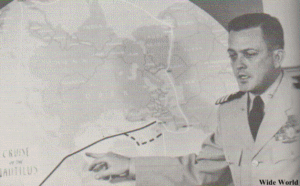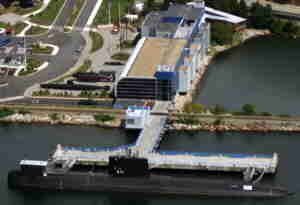 SKC Films Library SKC Films Library |
| SKC Films Library >> Naval Science >> Ships of the United States Navy, A-Z |
| USS Nautilus (SSN-571) the first nuclear powered ship in the world, and the first to cross under the North Pole
Basic Facts Length: 323.8 feet Armament six 21-inch torpedo tubes Crew Officers: 13 basic diagram of the Nautilus History The world's first nuclear powered ship was not the first to bear the name Nautilus. The first was a 12-gun schooner that saw action during the war with Tripoli but was captured by the British soon after outbreak of the War of 1812. The second Nautilus was a schooner commissioned in 1847 that saw action in the war with Mexico. The first submarine to be called Nautilus was commissioned in 1911; she served until 1922, but was renamed soon after commissioning. A Motot Patrol Boat was christened Nautilus in 1917 and saw service during World War I. SS-168 was the second submarine to be called Nautilus; she entered service in 1930 and saw extensive action in the Pacific Theater during World War II. In July of 1951, the U.S. Congress authorized the development of a nuclear powered submarine. Research on and testing of a nuclear propulsion plant began soon after, at the Naval Reactors Branch of the Atomic Energy Commission, with all work personally supervised by Captain Hyman G. Rickover, the principal proponent of a nuclear navy. The engine itself was designed and built by Westinghouse at the AEC's plant near Arco, Idaho. The ship's keel was laid by President Harry S. Truman on June 14, 1952, at the Electric Boat Division of General Dynamics Corporation in Groton, CT. She was christened by Mrs. Dwight D. Eisenhower and launched on September 30, 1954, under the command of Commander Eugene P. Wilkinson. USS Nautilus launching ceremony
(Admiral Rickover is in front at far left Mrs. Eisenhower christens the
Nautilus The Nautilus spent her first months dockside while her engine and other systems were tested. Her power plant became operational on December 20, 1954, and full power was achieved on January 3, 1955. She finally set out under nuclear power on January 17, 1955, and, after a series of tests, was accepted by the U.S. Navy as SSN-571 on April 22, 1955. The Nautilus began setting records almost immediately. On her first shakedown cruise, in May 1955, she sailed from New London, Connecticut, to San Juan, Puerto Rico, the longest distance ever travelled by a submarine (1,381 miles). She also set a speed record for the journey (89.9 hours), and for the longest period of complete submergence. She was accepted for unrestricted service on May 11, 1956. In May of 1957, the Nautilus set another record by cruising from the Panama Canal to San Diego completely submerged, a distance of 3,049 miles. In August of 1957, the Nautilus, now commanded by Commander William R. Anderson, sailed 1,383 miles under the polar ice cap, coming within 180 miles of the North Pole, the furthest distance north ever reached by any ship. It was, however, just a prelude to an even greater achievement. On July 23, 1958, the Nautilus set out from Pearl Harbor on a top-secret northward-bound voyage. No one, including the crew, with the exception of Commander Anderson, knew what the submarine's goal was until August 3, when the navigator reported that the Nautilus was at the geographic North Pole; the ship and crew had just become the first to literally sail under the North Pole. Commander Anderson describing the Nautilus'
transpolar route The Nautilus continued to set records, carry out important missions, and conduct polar research until being decommissioned on March 3, 1980. During her 26 years of service she had covered 513,550 nautical miles and had made 2,507 dives. She was designated a National Historic Landmark on May 20, 1982, and berthed at Groton, CT, where she remains today as the centerpiece of the Submarine Force Museum, which opened to the public on April 11, 1986. Submarine Force Museum, with the
Nautilus as principal exhibit Commanders of the Nautilus
(date took command) SOURCES SEE ALSO |
| SKC Films Library >> Naval Science >> Ships of the United States Navy, A-Z This page was last updated on 08/02/2017. |

